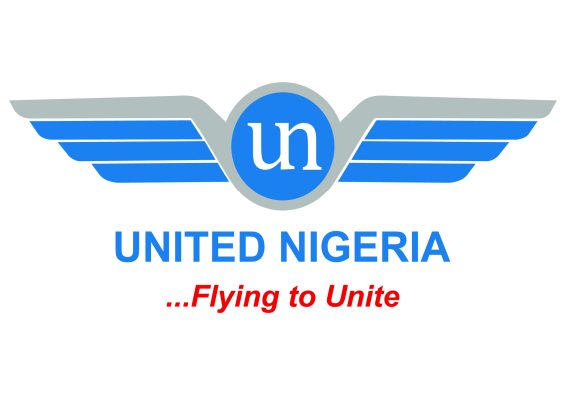Nigeria once had a world-class stadium

I anchor a new sports programme on Africa’s largest television network, the NTA, with a conservative domestic viewership of some 60 million Nigerians in all corners of the country. The live programme, The Sports Parliament, has been running for 10 weeks.
This past week the parliamentarians on the show discussed the state of sports facilities and infrastructure in Nigeria, and paid particular attention to the National Stadium, in Surulere, Lagos.
A sprawling sports complex, one of the best in Africa at a time, it has now gone bad, wasting in dereliction, lying idle and decaying in a sea of humongous opportunities and possibilities.
During the programme the conversation on the National Stadium in Lagos reminded me of another even bigger sports infrastructural disaster, one that I must tell the world about just so that everyone appreciates the level of decadence that has befallen Nigerian sports facilities.
There are several similar stories of wasting and mostly idle sports facilities dotting the country’s landscape that must also, one day, be told. But this here is the story of the greatest yet in our country’s history that was destroyed before our very eyes, and is now left to rot in the dungeon of history.
I paid my first visit to the Liberty Stadium, Ibadan, as a teenage student to watch the finals of the Nigerian Challenge Cup (the FA Cup) played in that wonderful sports edifice between Bendel Insurance FC of Benin and Mighty Jets FC of Jos. That was in 1972.
Ibadan used to be the largest and the most populous city in West Africa, a political beehive, seat of the government of Western Nigeria and headquarters of one of the most culturally advanced, sophisticated and educated black tribes on earth – the Yoruba.
I was fascinated by the city – its sprawling University of Ibadan, its majestic skyscraper (the Cocoa House), its wide Queen Elizabeth road boulevard, Nigeria’s first University Teaching hospital, the first television station in the whole of Africa, and Liberty Stadium, all built around the period of Nigeria’s Independence in 1960.
Understandably, it was the stadium complex that held my greatest fascination.
On that memorable evening in October of 1972 I had the opportunity of my first experience of the stadium.
The stadium had a massive global reputation at that time, having successfully hosted, amongst other international events, the world boxing title fight between Nigeria’s Dick Tiger and America’s Gene Fulmer in July 1963. The fight was transmitted live by WNTV/WNBS, Africa’s first television station.
Nigeria’s Dick Tiger won that fight to become the world’s welterweight champion, and the stadium attained global rating as a world-class facility.
The match itself was going to be the first FA Cup final to be hosted outside the country’s capital, Lagos.
The match was moved to Ibadan from Lagos following the controversy generated by the first match at the King George V Stadium in Lagos.
The match had ended abruptly in confusion when a goal was scored with the last kick of the ball. The struck ball zoomed into the back of the Bendel Insurance FC goal just as the long blast of the final whistle sounded.
Was the whistle signal of a goal? Or was it the signal of the end of the match?
The ensuing mayhem caused the incursion of a celebrating crowd onto the field, as no one was sure what the decision of the referee was.
The result of that match was decided later that evening in the NFA boardroom and announced on national radio. A goal was awarded to Mighty Jets of Jos, making the final score 2–2, a replay was ordered and the match moved to a more secure and better stadium with its immaculate world-class ambiance and turf.
That’s how I had my first opportunity to watch an FA Cup final as well as see and experience Liberty Stadium.
The stadium had a capacity of 25 000. It was a beautiful all-seater stadium with tartan running tracks and an underground entrance for teams leading straight to within a few feet of the main playing pitch, an architectural masterpiece at the time and still considered something special even today in the world of stadia design.
Liberty stadium, with its first class drainage and watering systems, immaculate flat, lush green Bermuda grass turf, was way ahead of its time in 1972.
The turf, in particular, and its daily maintenance regimen were a tourist attraction.
It was not uncommon to see hundreds of students on an excursion from schools all over Western Nigeria at the stadium early in the mornings.
They come to watch and appreciate the wonder of the well-synchronized, water-sprinkler system as well as the grass-mowing techniques of designing intricate patterns on the grass field surface (both novelties at the time) coordinated by a highly UK-trained staff of stadium managers and groundsmen.
Around 1995, the federal government of Nigeria took over the ownership of Liberty Stadium in preparation for bidding and hosting Nigeria ‘99, the Fifa World Youth football championship.
As part of the upgrading, renovation, and expansion of the stadium facilities for the event, an Israeli company was contracted to work on the stadium.
The stadium was closed. One year into the renovation work, the head engineer of the project, an Israeli gentleman, lamented to us in a private chat at the stadium that what they met on ground at the Liberty Stadium was technologically way ahead of anything they had ever seen or handled even in Europe.
They were absolutely stunned at the sophisticated drainage and watering system, as well as the well-established professional maintenance culture in place, and that there was no need whatsoever to have excavated anything and replaced it with an untested underground watering system called the Cell system that they had been contracted to install. Even Israel, a mostly desert country that needed such a ‘modern’ facility, he confessed, did not have one!
Nigeria, a country in the equatorial region of the world, with over-abundance of natural rainwater, had no such need!
So whose idea was it to ‘kill’ the stadium?
The entire project was a disaster. The damage was irreparable. Liberty Stadium, the venue that used to be the hub of social and sports activity in the whole of Western Nigeria ‘died’ immediately!
No decent sports event, of national or international dimension, ever took place again in that venue. It has been over two decades since then.
The monument built by the late political sage and Yoruba leader, Chief Obafemi Awolowo, to develop and promote the best culture of sports in Nigeria was permanently destroyed by a few greedy and, probably, ignorant sports administrators in the Federal Ministry of Sports at the time.
That edifice is now a shadow, a colossal national disgrace, a monumental disaster, a psychological depressant, a permanent eyesore, a skeleton in the sun, a daily reminder of how a few Nigerian sports administrators destroyed a sports edifice and national heritage.
The surprise is that no one went to jail for the deliberate destruction.
Culled from supersport.com








